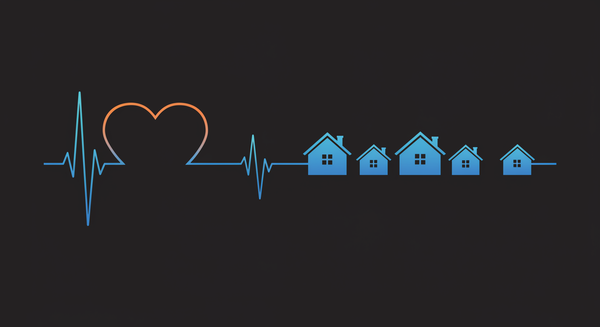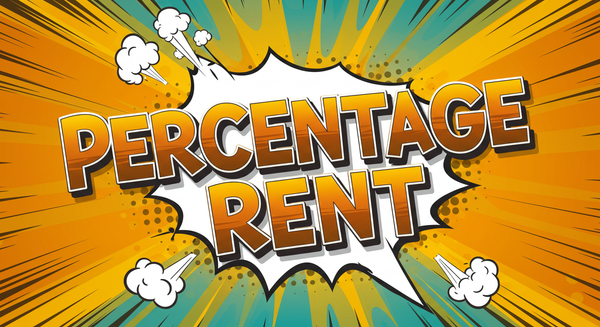Landlord in Property Management: Legal Role, Tenant Rights & Best Practices
A landlord is the property owner, lessor, or sublessor who leases residential rental units in exchange for compensation, usually rent.

The term landlord often brings to mind a person collecting monthly rent from tenants—but in reality, it's a legal and operational role with significant responsibilities. A landlord is the property owner, lessor, or sublessor who leases residential rental units in exchange for compensation, usually rent.
In property management, the landlord-tenant relationship is at the core of everything—from written lease agreements and rent control to eviction procedures and housing code compliance. Understanding the full scope of what it means to be a landlord protects your investments, ensures tenant rights, and keeps your business compliant with local laws and federal programs like the Housing Choice Voucher Program.
In this article, you’ll learn:
- What a landlord is (legally and practically)
- The role landlords play in operations and revenue for rentals
- Relevant legal risks and tenant protections
- Best practices to manage properties effectively
- Answers to the most common landlord-related questions
🧱 What Is a Landlord?
A landlord is a person or entity that owns or controls rental property and leases it to a tenant through a rental agreement or written lease. This includes dwelling units, leased premises, apartments, or manufactured homes.
📝 Landlord definition in action:
- In Texas, a landlord is defined by law as “the owner, lessor, or sublessor of a dwelling” and includes property management companies that act in the owner’s place.
- In Arizona, even a manager of the premises may be considered the landlord if they fail to disclose who the actual owner is.
In some jurisdictions, landlords also include those overseeing subsidized housing, acting in partnership with government agencies to provide affordable options to prospective tenants.
Synonyms and Related Terms:
- Property owner
- Lessor
- Housing provider
- Manager (in some legal contexts)
Want to dive deeper? See our guide to rental property compliance documentation.
Landlord–Tenant Relationship Overview
Legal & Operational Structure in Residential Leasing
(Written or Oral)
(Repairs, Notices, Compliance)
🔍 Impact & Applications
🏢 Operational Impact
Being a landlord is more than just about cashing rent checks. It’s about protecting your assets, understanding landlord rights, and maintaining solid tenant relationships. It's about having a firm grasp of landlord-tenant laws. Here’s how the role impacts real-world operations:
- Lease management: Ensuring written rental agreements are clear, compliant, and updated.
- Rent collection: Tracking monthly rent, dealing with unpaid rent, and issuing written notices.
- Compliance risk: Violating the Fair Housing Act or local housing codes can lead to complaints or lawsuits.
- Maintenance: Failing to repair issues within state-mandated timelines may result in tenant withholding rent or legal action.
📊 According to the Harvard Joint Center for Housing Studies, during the pandemic:
- Only 60% of landlords collected 90%+ of rent (down from 89% in 2019).
- 28.6% collected between 50–89% of charged rent.
- Deferred maintenance jumped from 5% to 31%.
Missing this detail could cost you thousands in back charges.
Many small landlords also function as their own property managers, while others outsource to management companies who handle everything from rental income collection to compliance documentation.
🧭 Real-World Application
Example: Embracing Section 8 Without Headaches
- Challenge: A landlord with three rental units was skeptical of housing vouchers and unsure how subsidized housing would impact their cash flow.
- Solution: They connected with their local Public Housing Authority, reviewed lease agreement guidelines, and made minor property updates to pass Housing Quality Standards inspections.
- Outcome: One unit was occupied by a long-term Section 8 renter, generating stable income for 24+ months.
- Takeaway: Embracing programs like the Housing Choice Voucher Program can reduce vacancy and build goodwill—without compromising revenue.
Read more about subsidized housing regulations.
⚖️ Legal & Compliance Essentials
Being a landlord is not an easy feat since you are managing the homes that people live in and pay for. However, it is a rather simple role once you boil it down to the core concepts of what it means to manage rental properties.
🛑 Key Legal Responsibilities for Landlords
- Follow the Fair Housing Act: Never discriminate based on race, gender, disability, or family status.
- Honor lease terms: You can’t alter a written lease mid-term without consent.
- Give proper notice: Evictions, rent increases, and inspections all require written notice.
- Make timely repairs: Especially if they affect health, safety, or sanitation.
🛡️ HUD and state housing departments regularly investigate consumer complaints about discrimination, unpaid rent retaliation, and failure to maintain safe conditions.
Quick Tip: If you're in Texas, see the Texas Eviction Process guide to stay compliant.
✅ Best Practices for Landlords
1. Use Online Tools to Automate Rent & Repairs
Online platforms streamline rent payments, track maintenance, and send alerts for lease term renewals. Popular options include AppFolio, Buildium, and RentRedi.
2. Document Everything in Writing
Verbal agreements can create legal gray areas. Always use a written rental agreement outlining:
- Security deposit terms
- Pet and guest policies
- Late fee schedules
3. Conduct Fair, Consistent Tenant Screening
Run background checks, verify income, and ensure criteria comply with fair housing rules. Never reject a potential tenant for using Section 8 without checking local law.
4. Schedule Regular Property Inspections
Prevent costly property damage by inspecting each rental unit quarterly. Document issues and timelines for resolution.
❓ Key Questions Answered
How long does a landlord have to make repairs?
Most states require urgent issues (e.g. no heat, plumbing) to be addressed within 7–10 days of written notice. For non-urgent issues, 30 days is standard. Delays can violate tenant rights or local housing codes.
What should a tenant do if the landlord tries to evict for a breach of the lease?
They should respond in writing, review their lease agreement, and consult legal aid. In most cases, landlords must issue formal written notice and obtain a court judgment before removal.
Can your landlord enter your rental property without permission?
No—unless it's an emergency. Most states require 24–48 hours’ written notice before entry. Unauthorized entry may violate tenant privacy protections.
What happens if a tenant stays on after the lease ends?
They become a “holdover tenant.” The landlord can accept periodic rent or begin eviction proceedings. If accepted, the lease converts to month-to-month.
Can a landlord refuse to rent to me because I have a Section 8 certificate?
In many places, no. Some states and cities prohibit discrimination based on source of income. Check your local law or contact a consumer protection agency.
Can your landlord change rules such as pet regulations in the middle of your lease?
Only if your written lease allows it. Most changes can’t be enforced until the next lease term unless both parties agree.
📚 Conclusion & Resources
Being a landlord means balancing legal accountability, operational excellence, and human connection. With strong systems and a clear understanding of your obligations, you can thrive—while providing safe, stable housing for tenants.
🔑 Key Takeaways:
- Landlords must understand local law, lease obligations, and federal housing rules.
- Strong documentation and tech tools simplify property management.
- Fair treatment and timely repairs protect your business—and your tenants.
📘 Recommended resources:
Ready to optimize your property management?
Explore our complete LandlordDoc resource library for guides, checklists, and expert advice.





